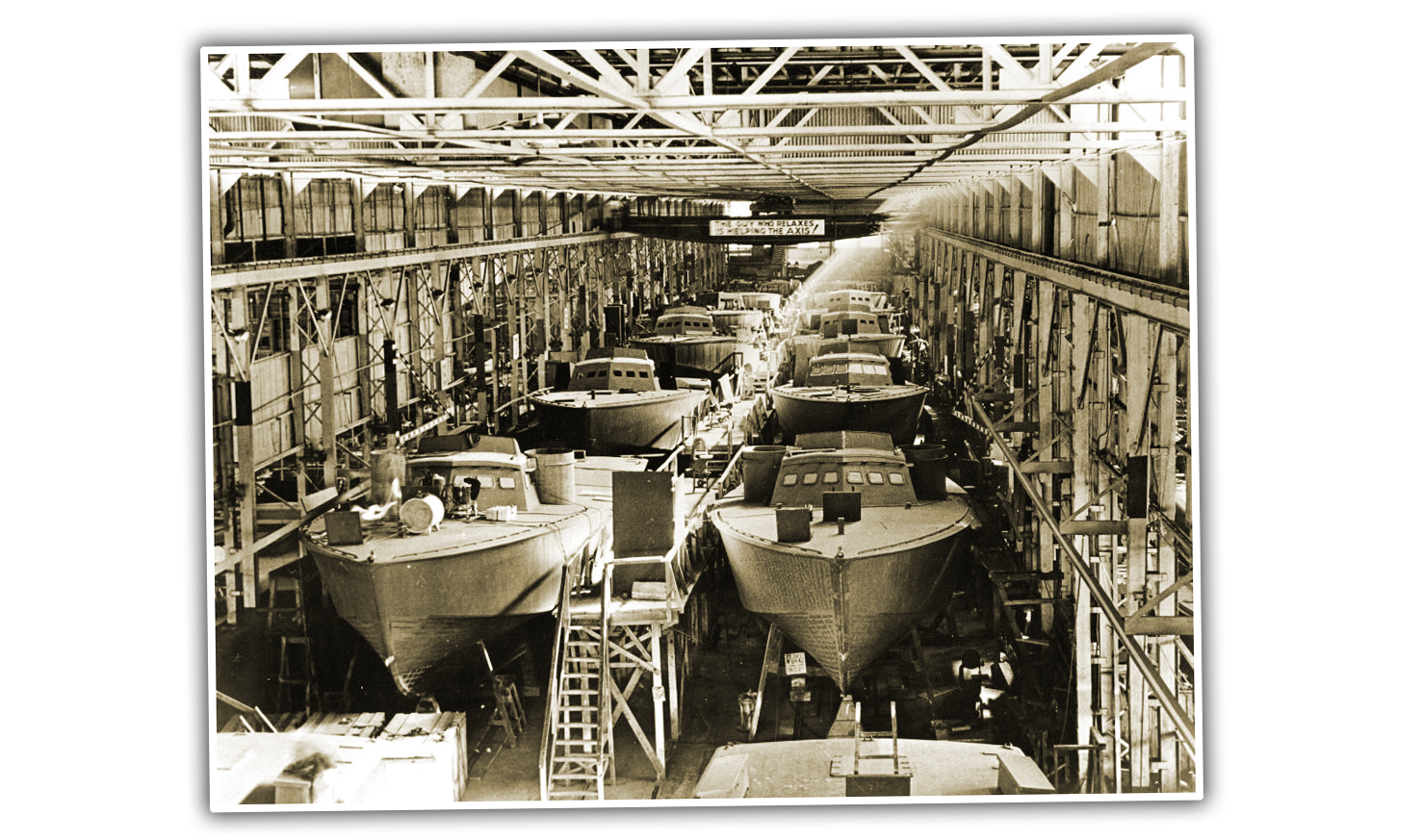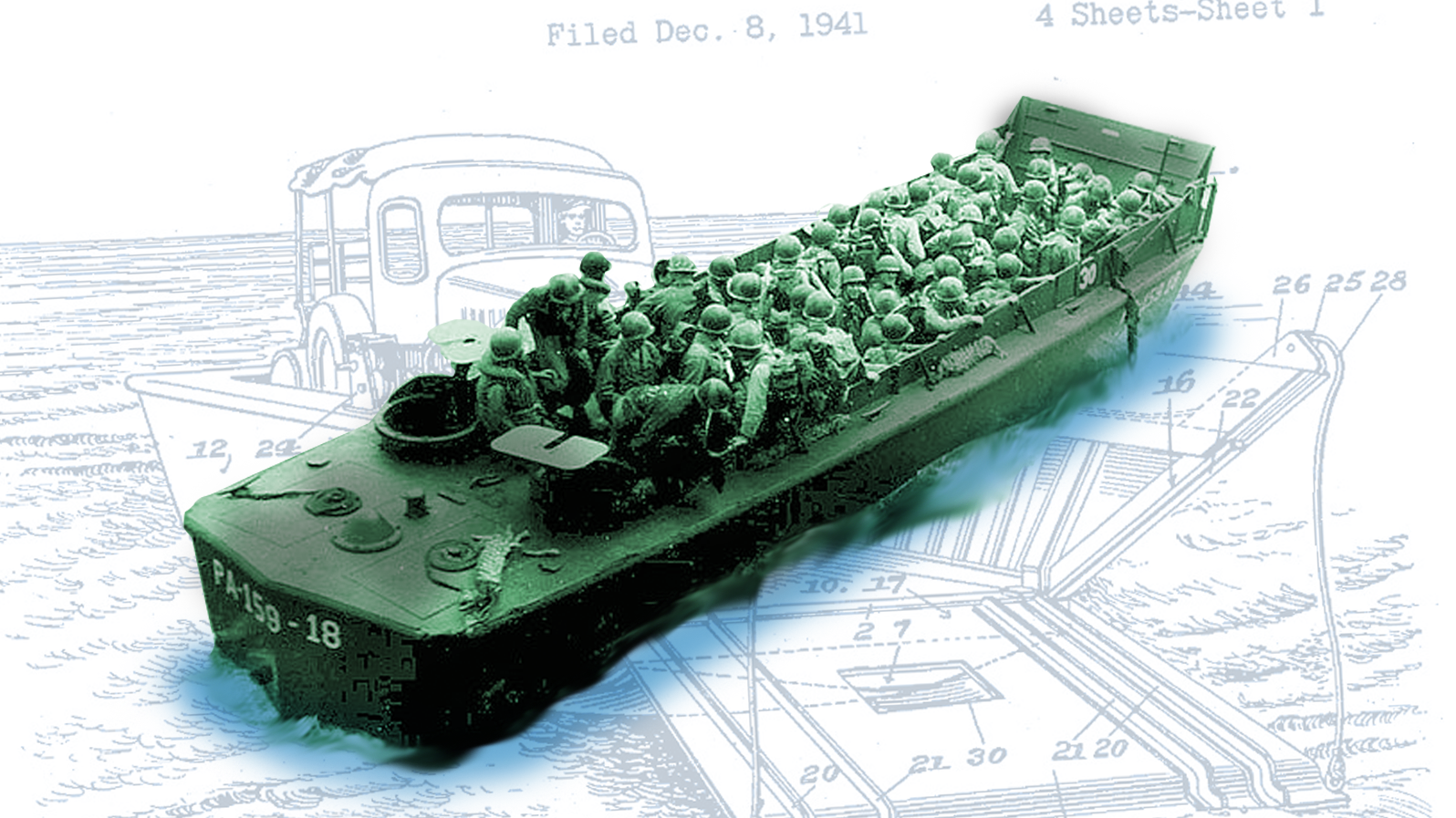


Posted on 06/06/2019 12:05:21 PM PDT by Responsibility2nd
As you likely know, it’s the 75th anniversary of D-Day, when 160,000 Allied troops invaded the beaches of Normandy, undertaking the largest from-the-sea invasion in the history of human warfare and marking the beginning of the end for the Axis. The actual business of getting over 100,000 soldiers and a metric crapton of vehicles and equipment from the ocean on to land is a decidedly non-trivial problem, one that the Allies solved with a brilliant but simple patented plywood boat: the Landing Craft, Vehicle and Personnel (LCVP), also called the Higgins Boat.
The Higgins Boat, named after its inventor, Andrew Higgins, was designed to solve what was basically the “last mile” problem for a military invasion: they could get all the troops and equipment over to the coast on large naval transport ships, but how do you then get all those people and that stuff from the ships onto the sandy beach?
To do that, you need some specialized boats, able to carry lots of people or cargo, with a very shallow draft to let them float right up to the very shore, and then you need some way to get all those soldiers and their equipment out of those boats, quickly and easily, because, remember, they’re being shot at by Nazis the entire time.
This problem is not just huge, solving it was absolutely critical to the very invasion itself. In fact, Dwight D. Eisenhower, at the time the Supreme Allied Commander in Europe, said of the Higgins boat and its inventor that
“If Higgins had not designed and built those LCVPs, we never could have landed over an open beach. The whole strategy of the war would have been different.”
Andrew Higgins was an interesting guy; he started out in the lumber business in Louisiana, but got into boat building in part by realizing the specialized transportation needs of trappers and oil-drillers in the Louisiana swamps, where shallow-draft boats were needed.
Higgins’ boat design, called “Eureka,” had a shallow draft and a protected propeller and were very easy to beach and then return to the water, all properties of the later LCVP. During prohibition, Higgins sold these types of fast, maneuverable boats to both liquor bootleggers and the Coast Guardthat chased them down, a pretty savvy business decision.
During testing in 1938 by the Marines and Navy, Higgins’ Eureka boats were found to outperform the boats the Navy had designed themselves. Higgins was encouraged (but not yet paid) to develop versions of his boats specifically for Naval use, and did so between 1939 and 1941, though his initial boats did not have the crucial bow that dropped down to form a ramp, which meant that troops had to climb out over the sides, making them vulnerable, and there was no good way to unload heavy equipment like Jeeps.
The front-as-a-ramp idea came from the Marine Corps, and in 1941 re-designed the boat to include the front drop-down ramp, dramatically improving the usefulness of the boat.
Now troops could exit a beached boat quickly, and jeeps and even tanks could be literally driven out of the boat and right onto the beach, ready to go.
That front ramp, made of steel, also provided most of the arms-fire protection for the troops inside the boat, and once that thing dropped down when they hit shore, there was no real protection inside the boat, which certainly helped encourage everyone to get the hell out of there and onto the shore.
The boats also had a pair of machine gun turrets and were powered by a seven-liter inline-six diesel engine making 225 horsepower, which was enough to push the 36-foot boat to 12 knots, or about 14 mph.
Higgins built over 20,000 LCVP boats, in a number of variations, over the course of the war, from his factory in New Orleans. Incredibly, by 1943, it was said that nine out of ten vessels in the Navy were designed by Higgins Industries.
Higgins worked his employees hard and fast, and was known for his lavish use of profanity, of which it was said that the cussing
“...flows as naturally as water from a spring, [and] is famous for its opulence and volume,”
It’s also worth noting that Higgins’ company was the first in New Orleans to racially integrate, and he paid all his employees equal wages, no matter their race or gender.
There’s very few original Higgins Boats left today, less than 20 by some counts, but if you really want to see what one was like, there is one on display outside the National Inventors Hall of Fame Museum at the United States Patent Office Headquarters in Alexandria, Virginia.
So, as you remember the monumental events of D-Day today, take a moment to also remember the big floating wooden box with the flip-down front that made it all possible.



bttt

A friend of my father in law drove one of these on D-Day and Iwo Jima. He just passed away a couple months ago.
He was the most mild manner of men.
They have an original Higgins Boat on display at the WWII museum in New Orleans. Ridiculously flimsy but served it’s purpose. That museum is a must visit if you’re ever in New Orleans.
OK, I’m confused: was the Higgins Boat a PT Boat or a Landing Craft?
Yeah, I imagine that after facing the hell on earth of both D-Day and Iwo Jima ... not much else left to get upset about.
Thanks Responsibility2nd. I recall reading that the manufacturing process ended with the paint job, which was applied aboard moving trains as the finished boats headed for the Atlantic ports for shipping overseas.
We kick asses in ways no one else does. :^)
Most other countries are so small that that wouldn’t give the paint time to dry—and in the ones that aren’t that small, the paint would tend to freeze for much of the year.
Higgins Industries built several variants of the landing craft and they also built PT boats along with a couple other manufacturers.
And do not forget the plywood gliders from D-Day.
Just watched a video about Higgins and the one at the museum in New Orleans is a replica built from the original blueprints along with help from some of the workers that constructed them during the war.
Makes a good partner to the plywood Mosquito.
You do know the hull on those things was a double layer of mahogany?
And the “bridge” on the tv show was cardboard? At least the pilot...
Two entirely different boats, and two entirely different missions. "Higgins Boat" was actually a generic name given to shallow draft vessels that could beach and offload men/equipment. Andrew Jackson Higgins and his contribution to to WWII was the reason the WWII Museum is in NOLA. Absolute bucket list museum. I've been many times.
https://www.nationalww2museum.org/students-teachers/student-resources/research-starters/research-starters-higgins-boats
Yes.
(They made both)
I stand corrected, but you definitely see how dangerous it would have been to assault a defended beach in one. Replica or not it is still something to behold.
The bravery of those guys in those boats when that front ramp dropped down. Stephen Spielberg did us great favor by giving us at least an inkling of what that must have been like.
Thanks; got it now.
I saw a photo of U.S. soldiers leaving a landing craft and the caption said: “College age men leaving their safe spaces.” The way I heard it was Higgins’ company was in the lumber business before the war, and figured out they (company employees) could design and produce shallow-draft boats for oil industry construction crews to use in the bayous and swamps of Louisiana. The museum in Nuahleens is on Higgins St., of course.
Disclaimer: Opinions posted on Free Republic are those of the individual posters and do not necessarily represent the opinion of Free Republic or its management. All materials posted herein are protected by copyright law and the exemption for fair use of copyrighted works.